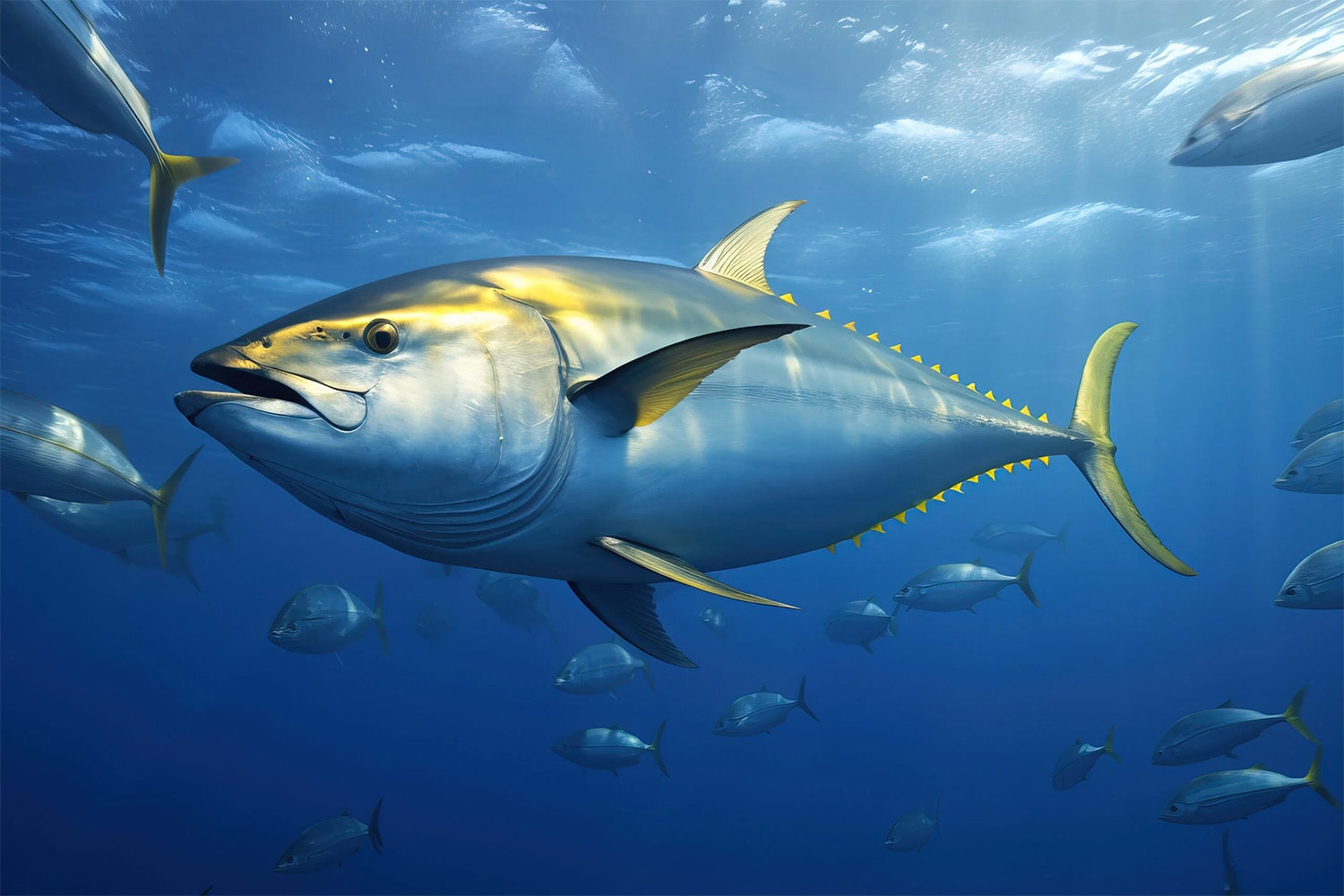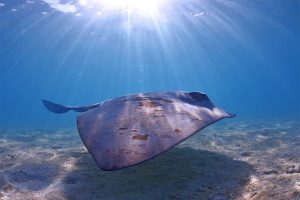
34 interesting facts about yellowfin tuna
- 👁️ 1086
Yellowfin tuna, with its striking appearance and athletic build, is one of the ocean’s most fascinating creatures. Renowned for its speed, strength, and size, this species plays a vital role in marine ecosystems and is a prized catch in sport fishing and a favorite among seafood lovers worldwide. Yellowfin tuna navigate the warm waters of the globe, embodying the mystery and majesty of the open sea. Their life cycle, behavior, and interaction with the environment offer a glimpse into the complexity of aquatic life. Here are 34 interesting and informative facts about yellowfin tuna that reveal the wonders of this magnificent fish.
- Yellowfin tuna are scientifically known as Thunnus albacares.
- They inhabit tropical and subtropical oceans worldwide.
- Yellowfin can grow up to 400 pounds (180 kilograms) in weight.
- The species is identified by its bright yellow fins and a sleek, streamlined body.
- Yellowfin tuna are capable of swimming at speeds of up to 50 miles per hour (80 kilometers per hour).
- They have a lifespan of up to 9 years.
- Yellowfin tuna are a highly migratory species, traveling thousands of miles in their lifetime.
- Their diet consists mainly of fish, squid, and crustaceans.
- Yellowfin are warm-blooded, a rare trait among fish, allowing them to thrive in various water temperatures.
- They are known for their incredible strength, making them a challenging catch for fishermen.
- Yellowfin tuna form schools with other tuna species and sometimes even with dolphins.
- They are a popular choice for sashimi and sushi due to their rich, red flesh.
- Yellowfin are often found in mixed schools, typically with skipjack and bigeye tuna.
- The species plays a crucial role in the marine food chain, controlling the population of prey species.
- Commercial fishing for yellowfin tuna is a significant industry, with the fish being sold fresh, frozen, or canned.
- Yellowfin tuna are among the top predators in their environment but are preyed upon by sharks and larger fish when young.
- The highest concentrations of yellowfin tuna are found in the Pacific Ocean.
- They use their speed and agility to outmaneuver prey and avoid predators.
- Yellowfin tuna are oviparous, releasing millions of eggs that are fertilized externally.
- The International Union for Conservation of Nature (IUCN) has listed yellowfin tuna as “Near Threatened” due to overfishing.
- Yellowfin have a unique heat exchange system that keeps their muscles warm, enhancing their swimming endurance.
- The fish are known to dive to depths of over 3,000 feet (1,000 meters) in search of food.
- Tagging studies have shown that yellowfin tuna can migrate across entire oceans.
- They are fished using methods such as purse seining, longlining, and pole-and-line.
- Yellowfin tuna support a major global seafood market, with significant economic value.
- Their body shape and fin placement are optimized for long-distance, high-speed swimming.
- Yellowfin can change color, from a deep blue to silver, to camouflage themselves in the water.
- The fish’s eyesight is highly developed, aiding in hunting at high speeds and in deep water.
- They have a special area of their body called the “corselet” that is thicker and scales around the shoulder, which provides protection and reduces drag.
- Yellowfin tuna are an important species for recreational sports fishing, attracting anglers from around the world.
- They have been recorded making vertical migrations, moving from deep to shallow waters daily.
- Yellowfin tuna’s meat quality and value can be affected by the stress and fatigue they experience when caught.
- The species’ reproductive rate is high, but so is the mortality rate among juveniles.
- Conservation efforts and sustainable fishing practices are crucial to ensuring the yellowfin tuna’s future.
Yellowfin tuna are not only an integral part of marine ecosystems but also a vital resource for human communities across the globe. Their remarkable abilities and characteristics make them a subject of endless fascination and importance in both ecological and economic contexts. The facts presented here underscore the need for responsible management and conservation strategies to protect these magnificent creatures and the oceans they inhabit. As we continue to learn more about yellowfin tuna, it becomes increasingly clear that their well-being is intertwined with the health of the marine environment and the sustainability of fisheries worldwide.











